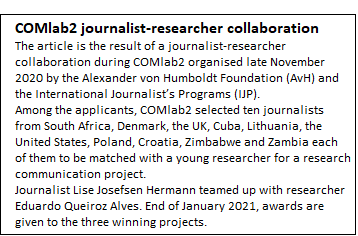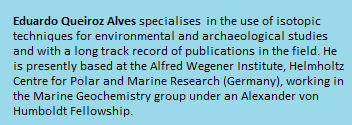Talking about climate change on several levels and with different meanings – is something essential to Anni-Sofia Niittyvuopio (21), Head of the Youth Council of the Finnish Sami parliament:
“One of our main goals is to participate when we talk about climate change. The Sami people, the indigenous peoples are the first who will face consequences of climate change, but we are least responsible for it. And this is a worldwide problem – that indigenous are not heard in the conversation”.
“We have seen climate change coming for many decades, we have tried to keep the conversation up, but we are passed the phase where it is possible to stop the impacts. But we have to just adapt to the changes. The situation is really bad in the indigenous communities”.

The 21-year-old Sami-remains reindeer herder, the traditional livelihood for her family. That makes her see the impacts of climate change close up.
“In Norway and Finland, it has been the worst winter ever for reindeer herding. There was so much snow and rain – which froze to ice, in the middle of the winter, so the reindeers couldn’t get to eat their food from the ground. It was a quite devastating winter for everyone. Me and my family can also see the impacts of last winter”.
Even though the talk with Anni-Sofia is only possible virtually, it is still clear through the screen-distance, that talking about this makes her profoundly sad. Not only because she repeats several times, how the situation is so critical and sad for her, her voice tells the same message.
“I have always felt this kind of responsibility about my community. So, this makes me sad. The reindeer herding is the one main thing that is keeping the Sami culture alive. So, if we lose reindeer herding, we lose the whole culture. The culture is connected to the land and reindeer herding is what protects the land from other usage of the land”.
For Anni-Sofia reindeer herding is a truly important part of her identity: “I can’t even imagine if I don’t have the possibility to work with the reindeer. For reindeer herding, Sami people it is the main identity. They have done it all their life and they don’t want to do anything else”.
Another important part of the Sami-culture is their indigenous language – which also has been affected by climate change, as the young leader explains: “We are losing words about nature and winter. In the Sami language we have tens and tens of words for snow. Heavy snow, light snow, sugarish snow. So now, we are losing these words because winter has changed so much. Our whole language is really connected to the nature. The months are named after nature and animals, they describe what happens in that time of the year. But now that the year is so different – the weather is never the same. The words keep the same, but the meaning is changing – we are losing the language too.”
Global South – Global North dialogue
Anni-Sofia Niittyvuopio had the opportunity to engage in an online dialogue with Brazilian-born Eduardo Queiroz Alves, who is studying climate change, to demonstrate the need to equal the voices and participation in the conversation about climate change as a step towards collaboration and acting together.
Eduardo: “It is interesting; that the first and most affected are not being heard by decision makers. We need to promote the integration between scientists, policy makers and the local populations. Indigenous peoples like the Sami have a lot of traditional knowledge, acquired through experience during a long time. We need to hear them, to think of ways how we can work together”.
Anni-Sofia: “It is really nice that you talk about the traditional knowledge, that we hold. We have lived here, and we have the will to hold the land, so that it can be used in a good way. When I think of scientists and climate change, I always also think about green colonialism like windmills, that are put to the indigenous peoples lands. It is promoted as we need green energy to stop climate change. And the same time, us, the indigenous people holds 80 % of the world’s biodiversity. We have traditional knowledge, and we have the solution for stopping climate change. But governments don’t want to use them, because they don’t see it as profitable”.
What do you feel about green energy and scientists?
Anni-Sofia: “When we talk widely about green energy and science it is positive. We, Sami people have a lot of faith in it. But there is a problem of representation and then, when we talk about green energy, there comes this problem with land use. Who gets to control the land use? According to UN declarations, indigenous people have the right to control land use. Also, in Finland according to the law – there must be negotiation with the Sami people about land use and things that affects our land. But usually, we are just informed that this and that is coming. It is not an equal conversation. Decisions are made for us. And then they call it discussion with us, so when the land use is questioned, they say that they have discussed it with our community, so that they can write to the newspapers, that they have talked to the indigenous people”.

Eduardo: “It is important, that we work together. Sometimes we can be perceived as invaders, we are leaving devices but not informing people. We need to talk with the Sami people and together design the studies and set the goals. Before doing research, we should get together and talk about the impacts for the local communities”.
Anni-Sofia: “We need to have a conversation. If you want to do study in indigenous land, you need to understand, that the research might not fit the area. If there is some building put up, it might not go along with our livelihood. That is the problem: The intention may be good, but it could impact the community negatively”.
Eduardo: What about the spiritual connection with nature, how is that for you Sami people? And does that help with protecting nature?
Anni-Sofia: “In Finland, Christianity has advanced so much, that we have lost parts of our traditional spirituality. But we still have this connection to the land, and we know, that if we lose the land, we are going to lose ourselves. I have lived four years in the city, I went to school there. But I am never going to live there. I was so sick in the city. I am from a village with maybe 200 people – the way of living is so different. Of course, many Sami and indigenous youth feel comfortable in the city and life there. The livelihood with the reindeer herding is something that keeps some people in the area. But if you don’t have that, then you don’t feel connected. I am herding my reindeers a place named after my ancestors. The maps, I have my family’s names on it – so it is easier to feel connected. I know that people live in the city, might not have that connection, and they feel sick up here in the North. They have lost their land”.
Eduardo: “Yeah it is a balance, it is about resilience. About changing together with nature.
Anni-Sofia: “Actually maybe some 60-80 % of all Sami live in cities or in the south, outside the home area. Some people feel “too soft”, to live here is rough because of the cultural trauma. I also feel sometimes – why in the earth am I living here?”
Eduardo: “You mentioned that indigenous people have the solutions to climate change. What solutions?”
Anni-Sofia: “The main solution for climate change is understanding the nature of nature. That nature is vulnerable, and it can’t handle the usage of people as much as we thought. Maybe the main way to stop climate change in an indigenous way is protecting land – we need to protect the land from land usage. We can’t anymore give land to the mining companies, windmills or oil pipelines companies. We don’t have any land to give anymore. Solutions must be made, in different places, in the main population places. And of course, when we talk about livelihood, or food, a plant-based diet is best solution for people at the moment. People talk about having this great connecting with nature, but they don’t understand, that us people living together with land, we eat meat, we give something, and take something. We face discrimination because we eat meat from the woods. So, people need to understand, that eating reindeer can be more ethical than bringing bananas from the middle Europe to northern Finland”.
Eduardo: “I see a lot of similarities to what we do in science. For instance, to understand the nature of nature. In science we are trying to understand the earth. How the planet responds to a changing climate and how people are using nature. This climate crisis is all about humans impacting the planet. Anni-Sofia says the same thing just without scientific words. We may use different words, but we are trying to achieve the same thing. That is why there needs to be cooperation. We are talking about the same thing, how the planet is impacted. We were also talking about how science is done, about access to places and how scientists disturb the environment – and don’t give information back to the people. It is important to formulate research questions together with the local population in a way that makes it relevant for the population”.
Anni-Sofia: “I think, we are at the same page. But there is one thing we need to solve, before we could start working together. When we talk about indigenous people, we have the trauma of being studied – it is still impacting — how we participate in studying – something that needs to be talked about – in indigenous communities – and among scientists – how we can do this without feeling that we are being studied.
Eduardo: “So indigenous people should not be an object of study but a part of the study. We should perform the study together. This conversation is interesting to me. I study climate change but at the moment, I don’t go to the field, I just go to the lab. I am not in the polar regions seeing climate change”.
Eduardo: Did the climate crisis bring attention to Sami people? A positive effect of climate change?
Anni-Sofia: “I agree at some level. Climate change have brought conversation to the indigenous people. But the problem is that the conversation is not about indigenous peoples, it is once again about how the land can be use. We need to be talking about how it can be protected from consequences of climate change”.
Read PART 1: Climate change: Permafrost carbon remobilization
Lise Josefsen Hermann is a freelance journalist based in Latin America for more than a decade. She specializes in environmental issues and climate change, human rights, indigenous peoples, migration and more. She is a Pulitzer Grantee and her work has been published with media like Al Jazeera, BBC, Deutsche Welle, Danish Broadcasting Corporation, Danish Development Research Network, El Pais, New York Times, and Undark Magazine.
 Anni-Sofia Niittyvuopio, Finnish Sami parliament
Anni-Sofia Niittyvuopio, Finnish Sami parliament

SUPPORT DDRN SCIENCE JOURNALISM. DONATE DKK 20 OR MORE (APPLICABLE IN DENMARK ONLY)
(APPLICABLE IN DENMARK ONLY)


